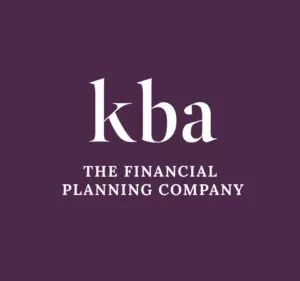The government’s flagship scheme to support first-time buyers is closing. Since its inception, thousands of households have used the Help to Buy Equity Loan scheme to support their goals. Read on to find out what alternatives you could consider.
The Help to Buy scheme was first introduced in 2013. According to government statistics, the scheme helped more than 55,000 people buy a home in the 2020/21 tax year.
It did this by providing an equity loan to buyers. This meant they could purchase a home with a 5% deposit and a lower mortgage. However, the scheme has ended and there are no plans to extend or replace it.
If you applied for the Help to Buy scheme before 31 October 2022, your home purchase must be complete by 31 March 2023 to use the scheme.
So, if you’re an aspiring homeowner, what are the alternatives that could provide you with a helping hand?
1. Mortgage guarantee scheme
If you’re in a position to buy in 2022, the mortgage guarantee scheme may be useful and is open until 31 December 2022.
Participating lenders offer 95% mortgages, so you need just a 5% deposit, thanks to a government guarantee. If you’ve already started saving a deposit, it could help you get on the property ladder sooner.
Participating mortgage lenders will still test your affordability. As a result, you should still ensure that you meet their criteria, your finances are in good order, and be realistic about the amount you can borrow before you apply.
We can help you identify which lenders are involved in the scheme and which could be right for you.
2. First Homes scheme
The government launched the First Homes scheme in 2021.
If you’re a first-time buyer interested in buying a new-build property in England, you could receive a discount of 30% to 50% of its market value. You must be able to get a mortgage for at least half the price of the home and your household income must be no more than £80,000 (£90,000 in London).
Some local councils may also have additional eligibility criteria such as prioritising local families or essential workers.
Properties purchased under the scheme cannot cost more than £250,000, or £420,000 in London, after the discount has been applied.
There are restrictions when you sell your home that you should carefully consider.
You can only sell the home to someone eligible to buy a First Home, and you must give them the same percentage discount that you received, based on the home’s market value at the time of the sale.
3. Lifetime ISA
A Lifetime ISA (LISA) can boost your deposit to help you reach your goal sooner.
You must be aged between 18 and 40 to open a LISA, although you can contribute until you are 50. Each tax year, you can add up to £4,000 to a LISA, which will then benefit from a 25% government bonus. So, if you contribute the maximum amount in a tax year, you’d receive a bonus of £1,000.
Saving a deposit is one of the biggest hurdles to homeownership that first-time buyers face, and a LISA can provide a welcome boost to your savings.
Keep in mind that if you make a withdrawal from a LISA for a purpose other than buying your first home before you’re 60, you will face a penalty, unless you have been diagnosed with a terminal illness.
You can choose either a Cash LISA, where your savings would earn interest, or a Stocks and Shares LISA, where your deposits would be invested.
4. Shared ownership
A shared ownership property means you purchase a portion of a home and pay rent on the rest.
This step means you can get on the property ladder with a smaller deposit. As you’ll be purchasing a portion of a property, you’ll also need a smaller mortgage. However, lenders consider your outgoings, so will factor in the portion of rent you’ll be paying when assessing how much you can borrow.
You can usually purchase more of your home in the future when your financial position allows. For instance, you may purchase 50% of your home now, increase it to 75% in 10 years, and eventually own 100% of the property. This is known as “staircasing”.
If you’re interested in a shared ownership property, you should check the criteria of the provider. You should also review what restrictions are in place. For example, could you refurbish the kitchen?
5. Guarantor mortgage
A guarantor mortgage means someone you know takes on some of the mortgage risk for you. It could help you access a better mortgage rate, borrow more, and purchase with a lower deposit.
Your guarantor may have to prove that they could cover the mortgage costs if you default, so they may have to offer their savings or home as security against the loan.
Another mortgage that allows your loved ones to help is a family offset mortgage. They would lock their savings in an account for a defined period, where it would earn interest. This acts as a deposit and, in some cases, means you can access a 100% mortgage. Assuming you keep up with mortgage repayments, the savings would be returned, along with accrued interest, when the defined period ends.
Are you ready to buy your first home?
As a first-time buyer, understanding the homebuying process and applying for a mortgage can seem complicated. We’re here to answer questions and provide support throughout. If you’re ready to buy your first home, please contact us.
Please note: This blog is for general information only and does not constitute advice. The information is aimed at retail clients only.
YOUR HOME MAY BE REPOSSESSED IF YOU DO NOT KEEP UP REPAYMENTS ON A MORTGAGE OR ANY OTHER DEBT SECURED ON IT. |



